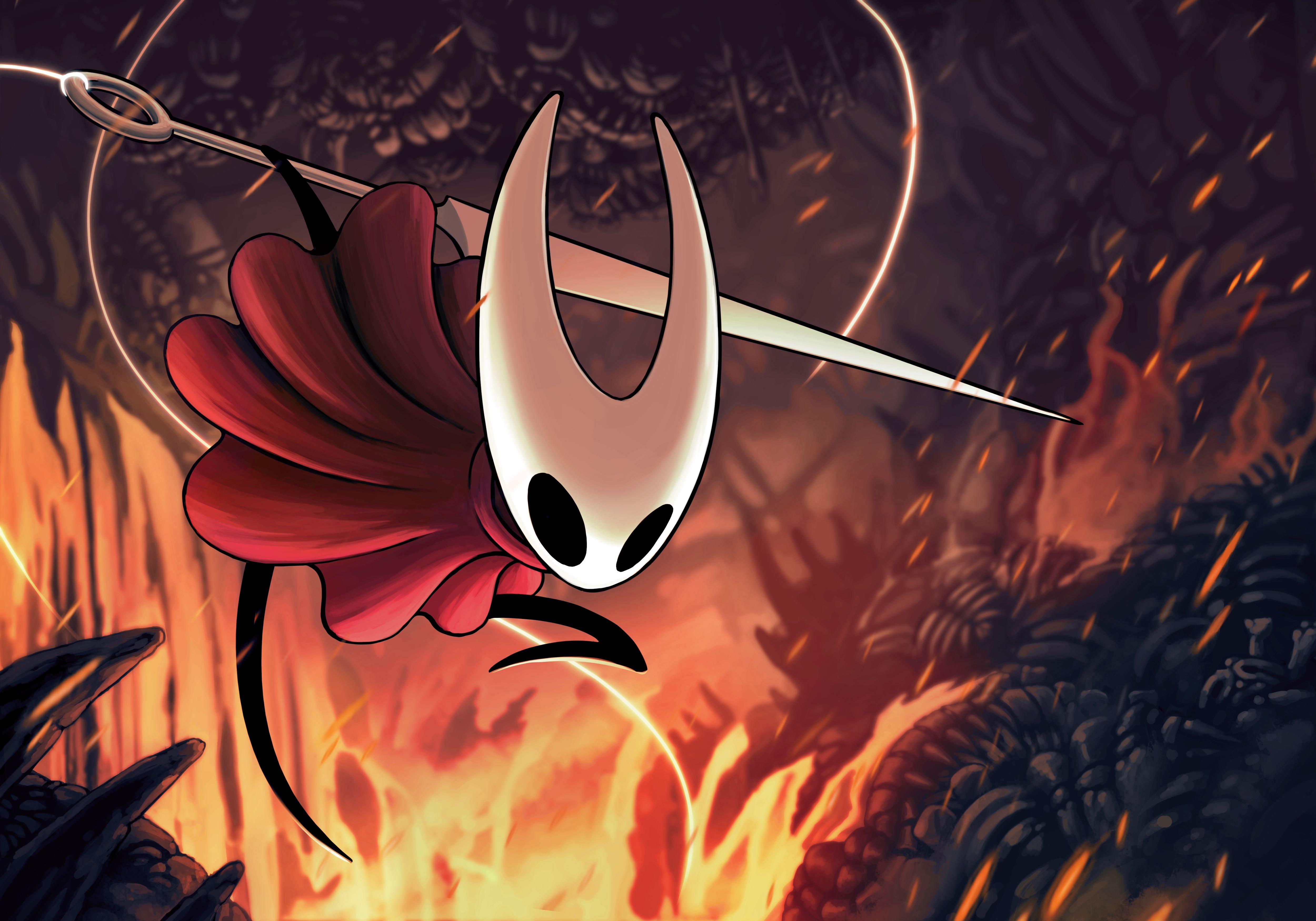It’s May 2025: six years after Team Cherry released a trailer publicly confirming Silksong’s graduation from DLC to a standalone game. There are rumblings of release frenzy: fervid articles relay minor updates to the game’s Steam page; a ten-second trailer clip in Nintendo’s announcement of the Switch 2 inspired nigh-religious fervour. I confess to having played my own small role in this – following the announcement that Silksong would feature in Game Worlds, the internet red-stringed their way through a series of ever-diminishing possible release windows.
In 2025, Silksong is one of the most anticipated videogame releases on the planet, but co-directors William Pellen and Ari Gibson are unfazed. I am speaking to them via Zoom, where they beam in from the same Adelaide-based studio in which they made Hollow Knight (2017).
They talk about Silksong with a quiet confidence that is unrelated to its potential commercial or critical success. For them, the chance to understand and expand the game world is the primary goal and reward of making Silksong. “I'm not thinking about it in those terms,” William tells me, “the goal is that we have this idea for a game, and we get to make the best version that we can of that game – one that satisfies the theme.”
For over a decade, Team Cherry have created intricate videogame worlds that reward curiosity and perseverance. Like their players, their goal as game developers is to explore. “To let us see the entirety of the world, and to see what's around those corners,” in Ari’s words.
Silksong was originally conceived as a reward for reaching $56,000 on the Hollow Knight Kickstarter. Team Cherry promised their anticipated debut would include a second playable character, delivered as DLC after the game’s release, with Hornet’s silhouette accompanying the entry/announcement. It was the final stretch goal that the Kickstarter met, before closing out at just over $57,000.
Looking at this list 11 years later opens a mirrored corridor of past, possible futures for the game. Many of the areas offered as stretch goals were included in Hollow Knight, regardless of the funding outcome The Colosseum of Fools and The Abyss (unmet goals, listed at $62k and $85k respectively), made it into the base game, while the option to play as a third character, Zote ($68k) failed to make the cut. A tragedy – though perhaps unsurprising, given the team’s “habit of making expanded content that tends to be quite large.”
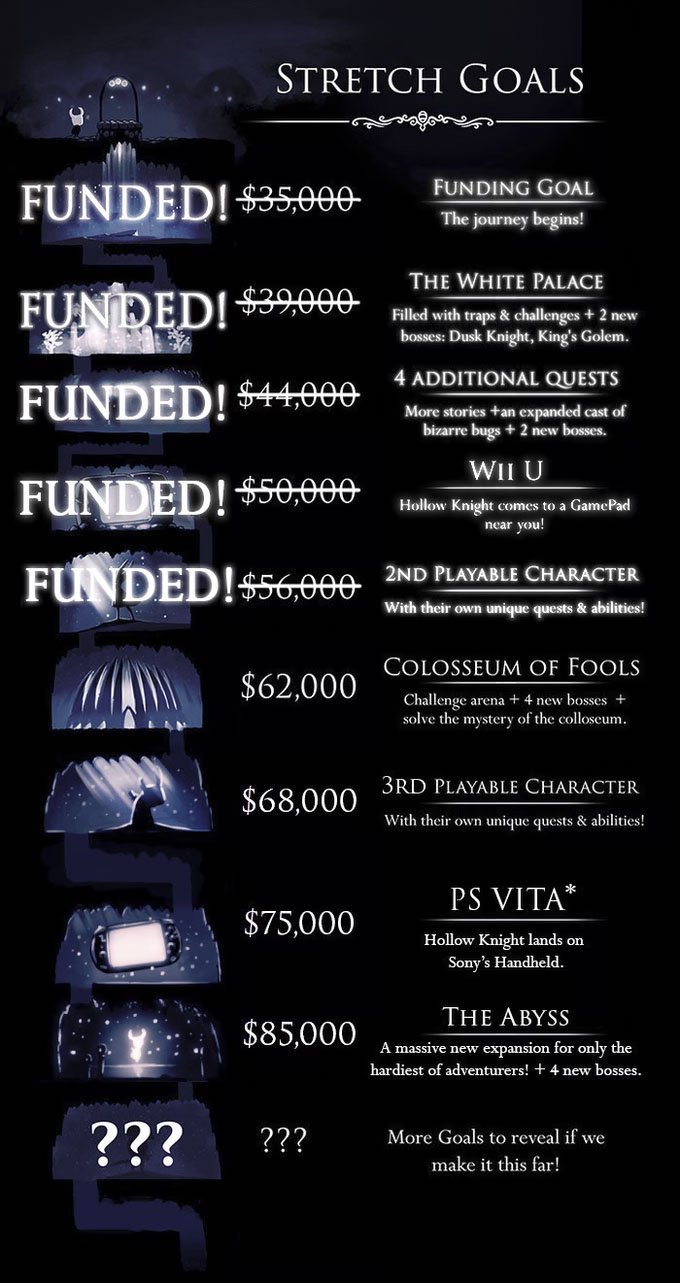
The original concept was to produce a Hollow Knight DLC where players could dynamically switch to Hornet. With a wider range of movement and different abilities to the knight, she’d be able to access entirely different areas of Hallownest and undertake unique adventures. Because there was no natural way to fit a Hallownest-style area into the world that suited her heigh and lithe movement, Team Cherry chose to make a standalone game – and with it, a new world that would reflect its main character. Developing the identity of this game world has led their creative process ever since.
Hungry Knight
To understand Team Cherry’s creative ethos, it’s worth going back to the beginning. There’s no single point of origin of Team Cherry, but Ludum Dare is, at the very least, an early landmark.
Ludum Dare is a game jam where solo creators or small teams have just 48 hours to make a game based on a theme. At the end, people vote on the best games made during that short time.
It sounds daunting– and it is – but a game jam like this isn’t about perfection or winning. The tight time limit, the theme, and the voting aren't there to make things harder; they’re there to push developers to be creative and let go of big, polished ideas. A game jam is really asking: If you only had two days and didn’t need to be perfect, what kind of game would you make?
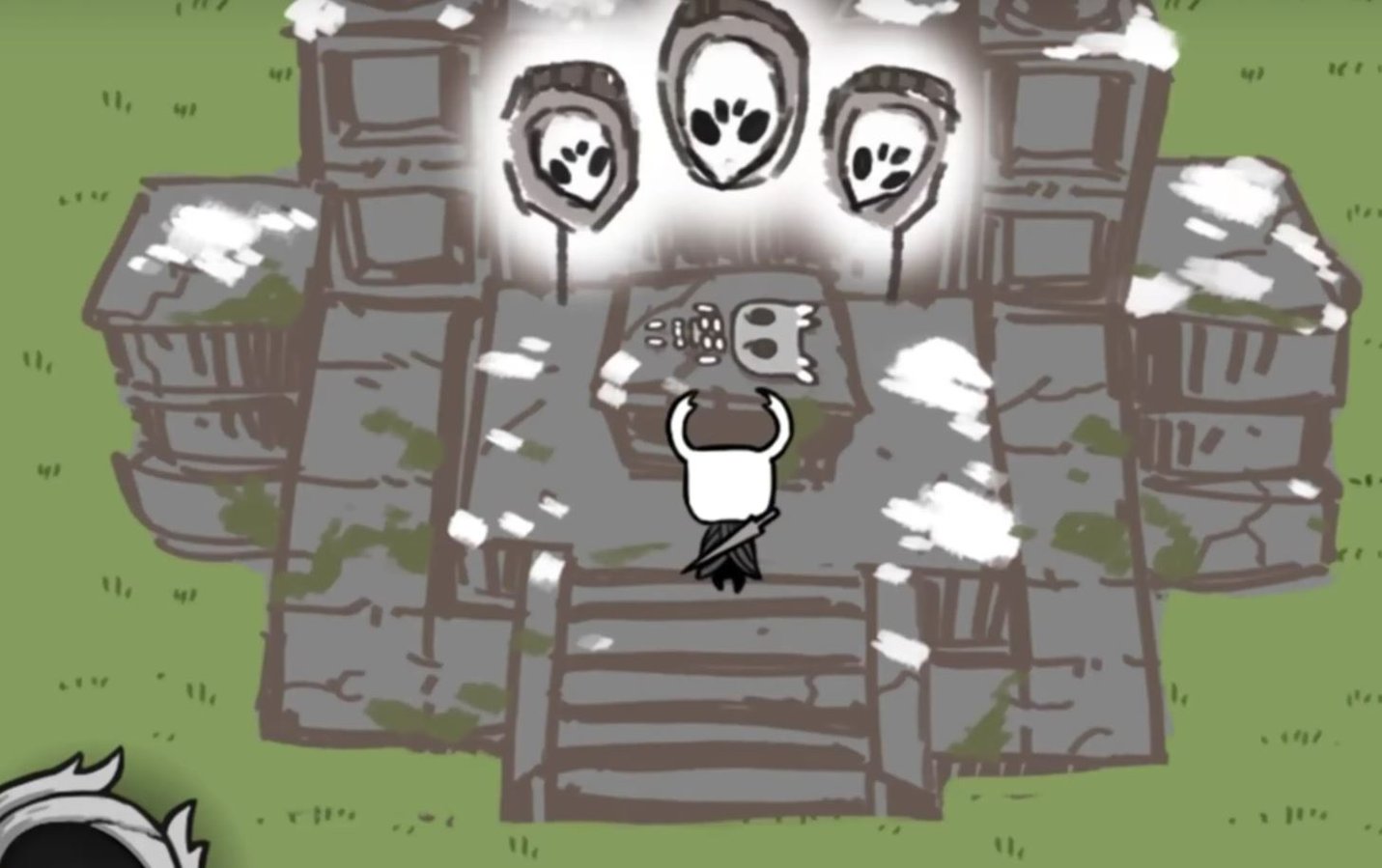
For Ludum Dare 27 in 2013, William Pellen, Ari Gibson and Rohan Fraser answered this question with Hungry Knight. Made in Stencyl, Hungry Knight was a simple Flash game in which you play as a horned and cloaked knight, travelling a simple map, killing enemies to eat the berries on their backs. That theme that year was ‘10 second’. Team Cherry incorporated it through a hunger bar, almost like a countdown timer. If the player failed to eat a berry within a 10-second window, they’d die and the game restarted.
Despite the relative simplicity, Team Cherry’s signature style is evident in the design of the titular knight, who’s almost identical to Hollow Knight’s protagonist, right down to the nail strapped to their back. The music is simpler than Christopher Larkin’s soaring orchestral score, but its use of synthesised strings, its balance of haunting and serene, feels familiar. The combatants, too, are recognisable – from little creeps with shining eyes to slow-moving masked giants, who queue up hits with a nigh-gravitational force, even across the scant animation frames the game offers.
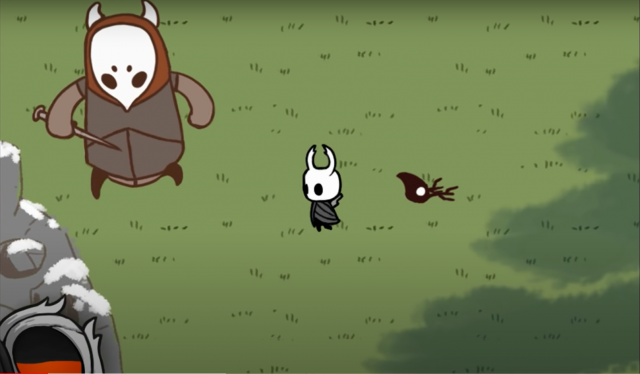
The greatest similarity might be in the original description, which is still available on Newgrounds, as is the game if you’ve got a Flash plugin. That description concludes: “A challenging action game. It's hard, but you can do it! Be brave.”
Hollow Knight
Another key development in the history of Hollow Knight is the launch of the Kickstarter campaign. On November 19, 2014, William, Ari and programmer David Kazi announced Team Cherry and Hollow Knight for the first time, intending to raise $36,000. The game was met with immediate enthusiasm, reaching 10% of its goal within 24 hours. By November 21, it was approved for Steam Greenlight, a program where the game was voted on a second time by the Steam community, to assess its viability for publication on the Steam storefront. Two days later, Hollow Knight was a Kickstarter staff pick. By December 10, Team Cherry was announcing stretch goals.
Like Hungry Knight, Hollow Knight’s Kickstarter page promised challenging “but fair” gameplay, but its focus was less on combat and more on exploring a world. Many of the update posts read more like bestiary entries, lovingly detailing dozens of creatures through text and gifs, which never came to life in the game. “An overgrown bloodsucker that will patiently stalk its prey until it finds the right time to strike”, reads the entry for the Greater Susking Hoppad. The Blundering Oberlisk – perhaps a precursor to Moss Charger that rams unwary knights in Greenpath – reads, “This placid herbivore doesn't seem to wish harm on any of the creatures it shares a habitat with. However, its careless nature and bulky weight sometimes leads to messy accidents.”
The Mega Moss Charger. Perhaps the final evolution of the Blundering Obelisk?
A week later, Team Cherry introduced the Nailsmith’s Forge, written as if it were fiction in the game, “Follow a twisting path from the outskirts of the drowning city. Cross a broken bridge and you'll hear it close, the ring of metal and the roar of flame. A craftsman obsessed.”
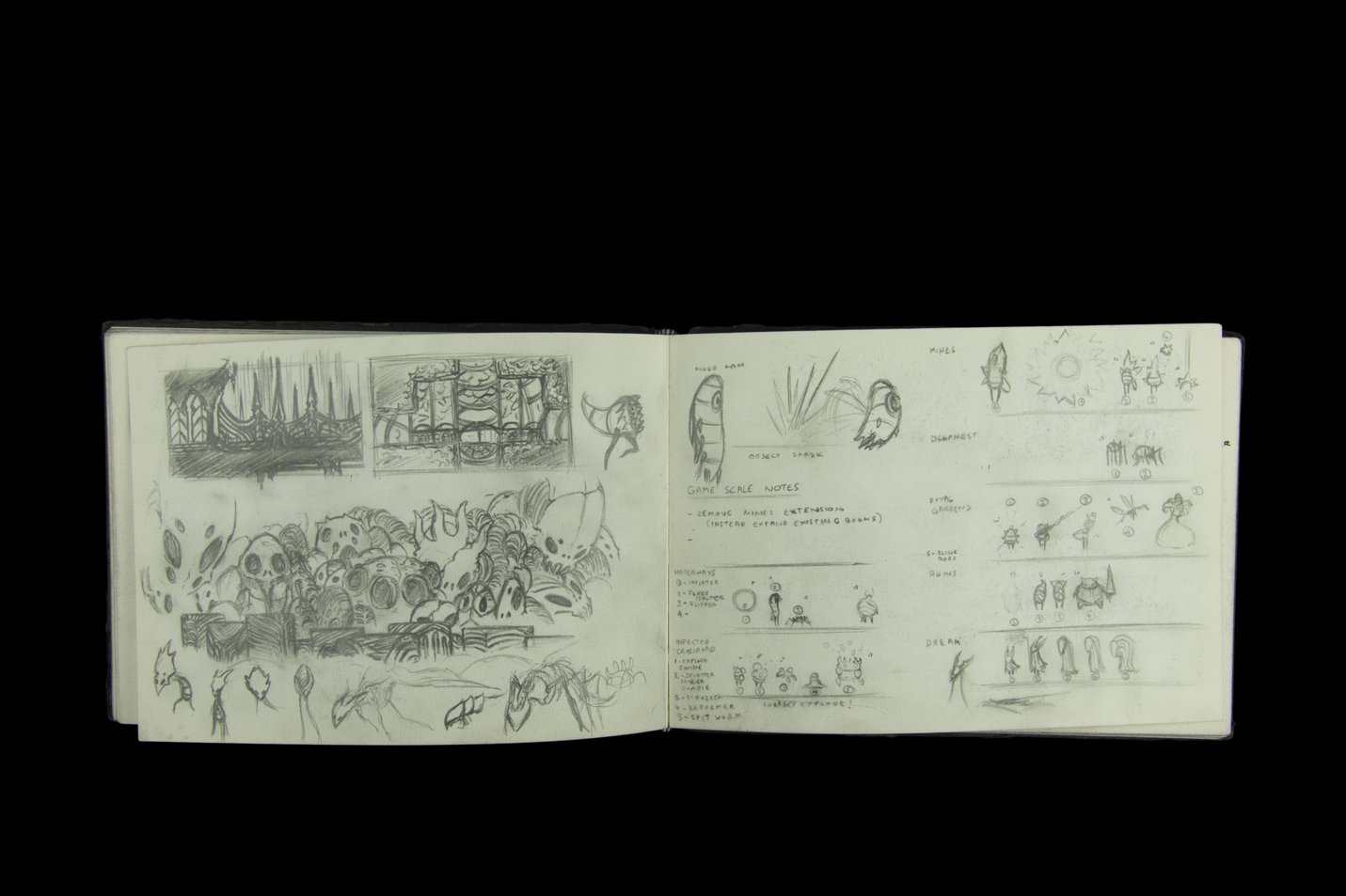
It’s not just a series of development updates; it’s a growing encyclopedia. This is emblematic of Team Cherry’s creative ethos. In Hollow Knight, you play as the Knight – literally a vessel, who is silent, passive, unfamiliar. While the player controls the Knight, this character is less a protagonist and more of a vector through which to meet the game’s true protagonist – Hallownest itself. Like a game jam, a game world, to Team Cherry, is a prompt: if you didn’t make something perfect, what would it look like to make something alive instead? It’s hard, but you can do it! Be brave.
Developing Silksong
Hollow Knight has been described as a challenging platformer, an action-RPG and a Metroidvania. Team Cherry proudly owns the influence of classic adventure games, including Metroid, on its development, but they’re equally careful to avoid these genres’ archetypes when they don’t serve the goal of exploration, for both the players and for themselves as creators.
The traditional linear sequencing of a Metroidvania was the first to go. Exploration in a traditional Metroidvania is gated via power-ups, which the player gains sequentially as they progress. But for William, this linearity was something they hoped to avoid: “It’s a specific kind of lock-and-key type of progression, and we try to submerge that element in favour of a more naturalistic world,” Ari describes.
The implications on the game development are significant. Without the safety net – or constraint – of a classic Metroidvania structure, their development process requires a different creative engine. For Team Cherry, that engine is the world itself.
This deference to the logic of the world itself necessitates a development process that is more fluid and conversational – but not without structure. “We try to be methodical – we’ll decide what area we’re working on that month, and move through it. So we have a plan – but the plan is never so calcified that it can't bear a change of course two weeks later – or two months later, or two years later,” Ari describes. They approach environmental design less as a series of levels, and more as the building out of space – a form of creative exploration they hope to invite their players to take part in.
"If you think about it more as a world and a space, it's actually much easier to come up with stuff to put in it,” William quips. “Early on with Hollow Knight, I did it a bit, trying to think of the space. If you’re trying to build a Mario level, you might take an empty space and think, oh, should there be a few platforms here? Should there be a certain type of enemy? But if you just start thinking- well, it's a cavern with a lake on the left or it's a ruined tower suddenly the design of the space at the micro level is much easier.”
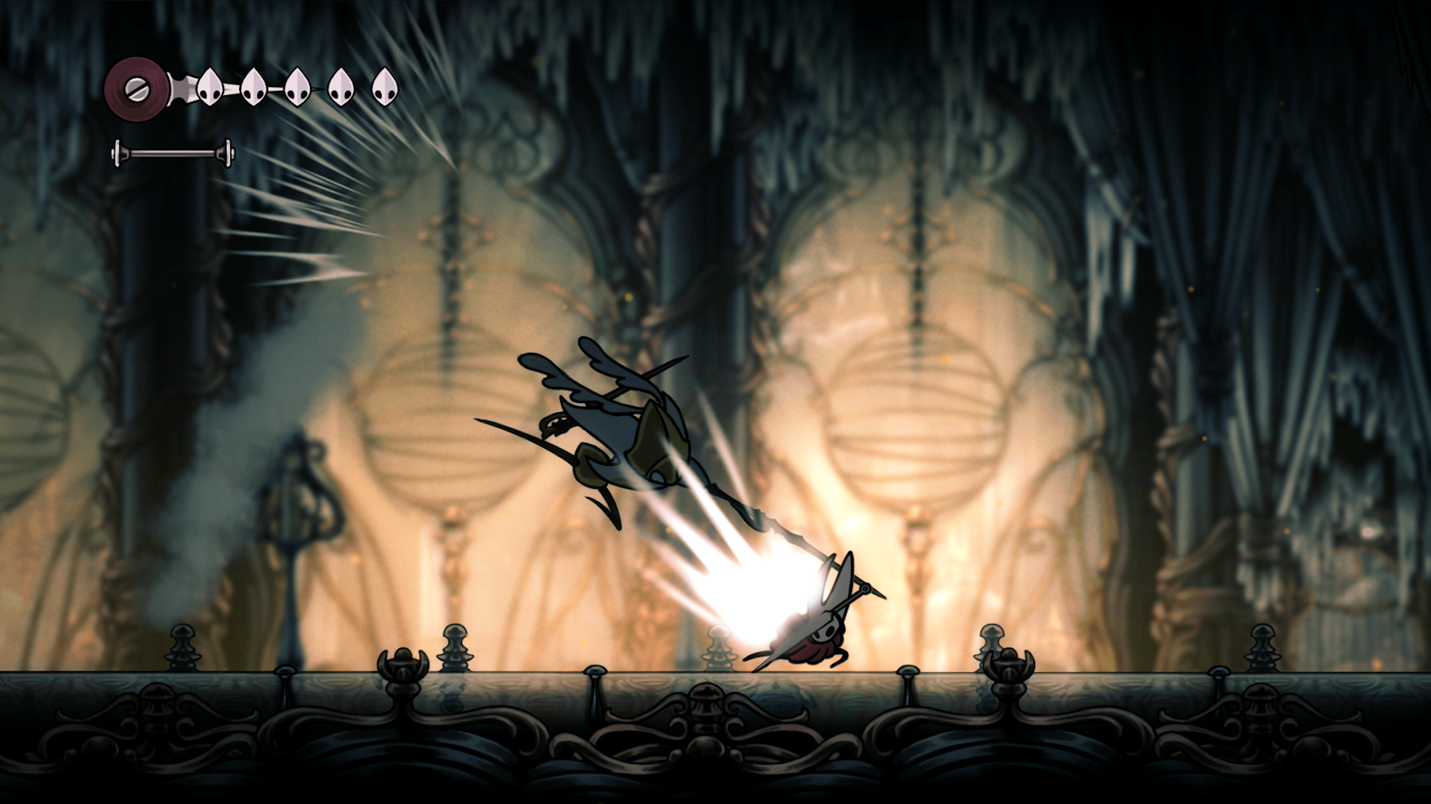
He cites the ever-present influence of ‘The Citadel’ as a guiding principle in the design of Silksong’s world, Pharloom. The holy city towers over the entire world, with an excessive, baroque design to awe and overwhelm players; who feel Pharloom’s presence in almost every corner of the map, long before reaching it. Little outposts throughout the world mimic the city’s ornate gilt architecture, signalling their allegiance; other areas, crippled by years of extraction and exploitation, reveal the darker side of The Citadel’s absolute power.
“As the map grew, we're generally not thinking about which power up you are getting next and where, and what places you’re moving through to get them,” he says.
“We're thinking about the Citadel at the top of the world, and what's around it – what you would expect to find, where that could lead you, and who you might find there? What might they ask you to do, and if you did do it, what would that mean? And where would that leave you?”
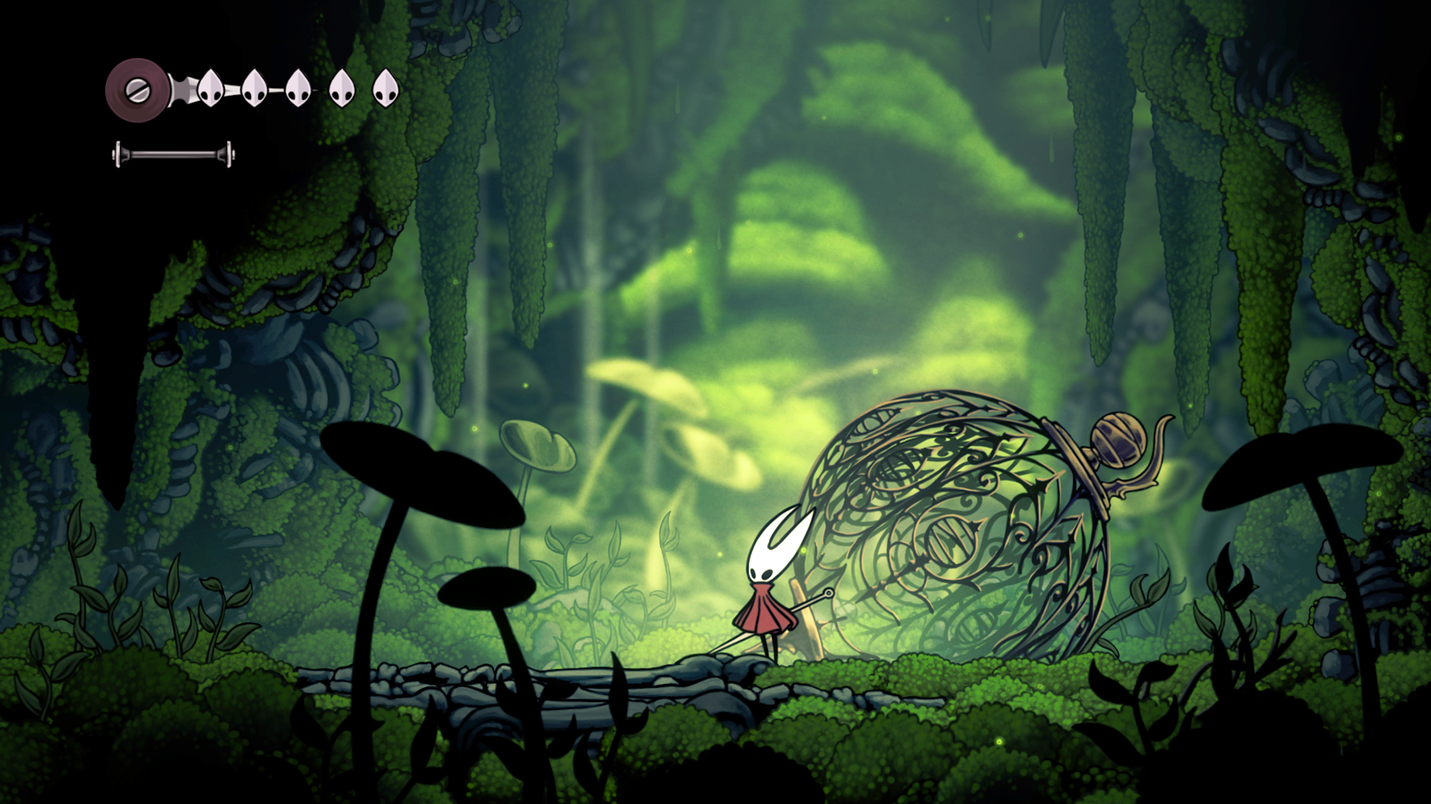
Silksong’s starting area, Moss Grotto, highlights another foundation – that Pharloom is an ecosystem, not a series of levels. After designing The Marrow, Silksong’s first major area, Team Cherry identified the need for a calmer space that allowed players to more easily acquaint themselves with the games control scheme, and Hornet’s agility and relatively complex moveset. But designing a starting area also risks tutorialisation – creating a level, rather than creating a space. William and Ari resist didacticism in all their games. “We're trying to be kind of respectful to the player. We're not trying to baby them. And I think there’s something nice in just saying: ‘Here's the world. Off you go!’” Ari explains.
If Moss Grotto couldn’t be a standalone tutorial cave, the introduction of this relatively tranquil, mossy green space needed to make sense in terms of Silksong’s ecosystem. As they thought through the relationship of this new biome to Pharloom as a whole, the existence of Moss Grotto naturally suggested the existence of the mosslands, a vein of green underground alcoves that sit just outside of The Citadel’s sphere of influence. Even during relatively practical design decisions like these, the game is shaped by the world’s logic – rather than the world being designed to fit the game.
Ari describes worldbuilding as a similar process to writing characters. “Writers talk about this idea that if they know their character well enough, the character can kind of take over and make decisions, or divert from the course the writer thought they would take – and because the writer knows them so well, they can just follow that character wherever they end up.
“Building a game world is very similar to that – we establish the foundations, and as those become clearer, the world suggests what else is going to exist. Then we just get to follow all those little ideas to their conclusion.”
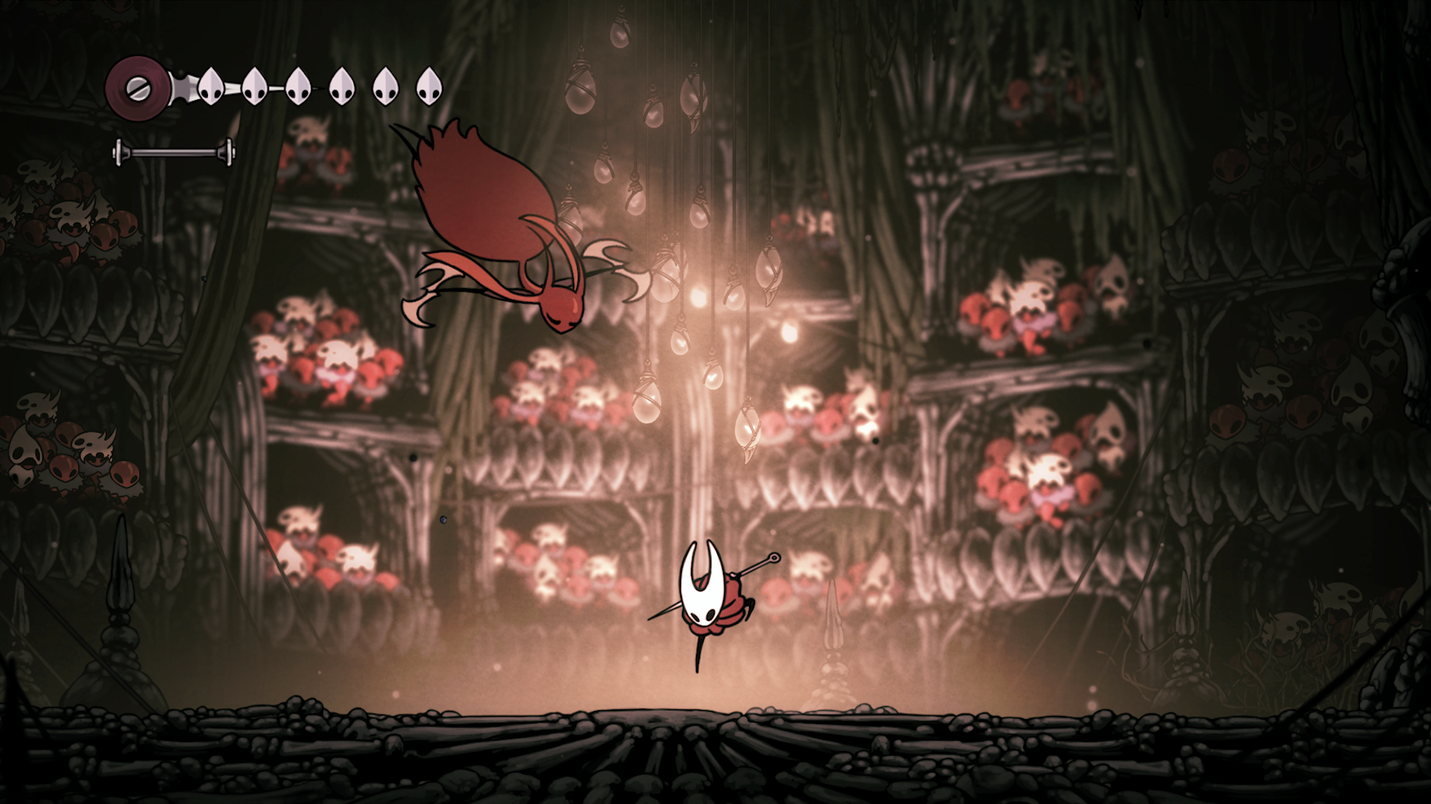
After the interview, I watch a 29-minute analysis of Nintendo Direct Silksong footage by YouTuber Mossbag. The tone is reverent and respectful; frame by frame, Mossbag explains ledges that have moved, and new textures that have been introduced. One section highlights a second-long clip of Hornet sliding down a spore-ridden hillside, which he contrasts with Hollow Knight’s grid-like environmental design, going so far as to show a screen recording of Hallownest’s colliders, which reveals that its only sloped surfaces – the roofs in the City of Tears – are actually coded as a series of three boxes at differing heights.
Rather than a demand for the game’s release, the video is more like a love letter to Pharloom, a world that Mossbag – and countless other Hollow Knight fans – are clearly already exploring through trailers, forums and Discord channels, even without the game’s release. Watching this attentive, undemanding analysis, I’m reminded of a comment Ari made earlier: “The real world generally underestimates players – especially young people –and it certainly underestimates their capacity to deal with things, and their ability to glean information, or be interested and be engaged. But with our players, you can guide them a little bit, and that’s enough. They’ll engage, they will dig in, they will find all that other stuff.”
The release of Silksong may be an event with a near-mythical status in the videogame landscape – but if the exploration of the world itself is the point, then Silksong has already succeeded before the game’s release. Its curious, intrepid fans are already engaging every creative faculty to understand Pharloom’s ecosystem, piece by piece. Like its makers, they are following the world where it grows, trusting its logic – and trusting their own ability to meet it where it goes.
This article appears in the upcoming publication ACMI Guide: Hollow Knight: Silksong, which features an exclusive interview with Team Cherry, development sketchbooks and behind the scenes material.
Pre-order your copy for the September 18 release. International shipping available.
